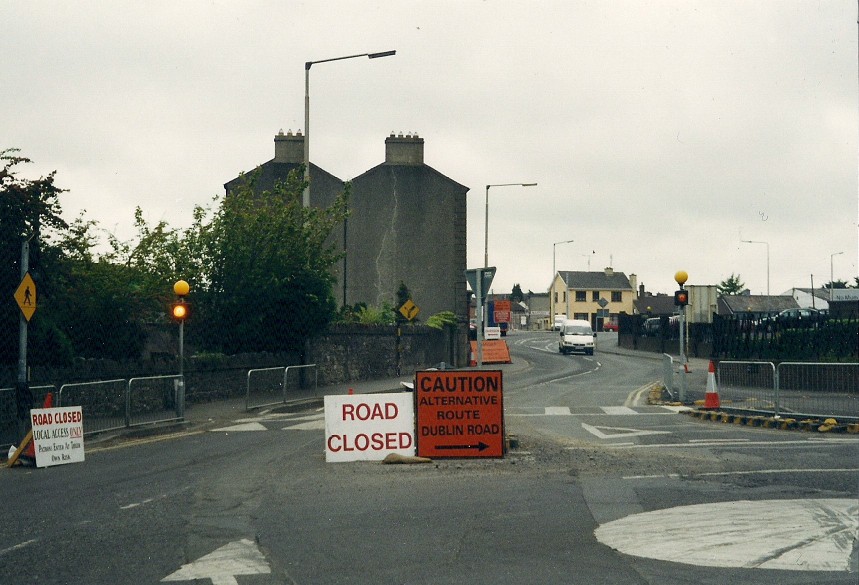
From about 1730, a network of turnpike roads spread across the country. They were established by Acts of Parliament and administered by local trustees responsible for setting tolls and organising repairs. A turnpike was a barrier or gate across the road and you had to pay the toll-keeper to get past. Well into the 19th century, what we call the Dublin Road was Turnpike Road with the tollgate situated near where Brown's shop is today. Turnpikes were common until the middle of the 19th century when the arrival of the railway made long-distance road travel less attractive. This is well-illustrated by the fact that, on a Griffith's Valuation map (1851), the name Turnpike Road is struck out and Portleix Road inserted instead. In 1901, the section of the road nearest the town was still the latter, and the remainder Dublin Street. The tall symmetrical house was once the residence (Portleix House) of the previously-mentioned Jacob family. In the course of a lengthy letter to The Freeman's Journal in May 1846, Dr John Jacob complained about vandalism in the town - "I could not preserve my fences, grass and other property.... young trees planted and replanted year after year were destroyed". - and condemned those locals who "prefer nightly depredation to daily industry". By 1901, Dr William G. Jacob, the last of the family to live in the town, had moved to Church Street and, subsequently, the Stradbally Road. In 1912, Portleix was acquired by the parish and renamed St. Joseph's. It is remarkable that, for almost the entire twentieth century, we've had only three parish priests; Dr Michael Murphy (1901-41), Very Rev. Thomas Browne (1941-76) and Very Rev. Gregory Brophy (1976-92). Half a century ago, when I was an altar boy in surplice and soutane (Introibo ad altare Dei... Ad Deum qui laetificat juventutem meam), a priest sometimes sent me with a message from the sacristy to the parochial house. What I remember most is passing through the nuns' garden, acutely aware that I was on holy ground, that I couldn't pick a flower or kick the gravel because, from every tree and bush, God the Father was watching me like a hawk. Looking back now, two things strike me: the amount of Latin we young lads could recite by heart, and how every move we made was under divine surveillance. Is it any wonder that so many of us turned from that relentless gaze? But even while pinned under the Church's moral microscope, the faithful found ways of 'striking back', usually through irreverent humour. The story goes that a local priest once came upon one of his parishoners up on a ladder. Noticing that the man's shoes were falling apart, he reached into his coat and produced a large wad of notes. He took off the elastic band: "Now, my child, here is something to repair your footwear". After the Parish Priest had moved to his new residence - just behind this one - the building continued to serve as the Parish Office and, in the evenings, the basement was hired out to local rock bands. Imagine: the ghosts of Jacobs past awakened from their slumbers by that eerie cackle and.... I am an anti-Christ.... I am an anarchist.... |
 |
 |
| HOMEPAGE |